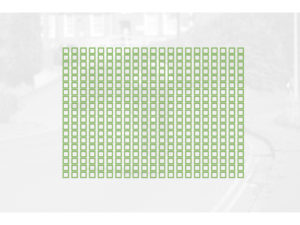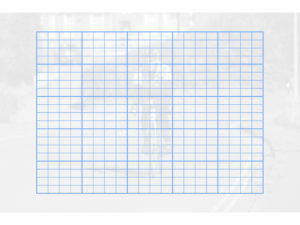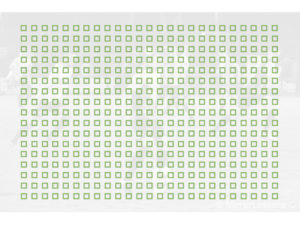The Sony E-mount range currently consists of three flagship cameras, two of which are the brand new A7rIII for the full-frame series and the a6500 for the APS-C range.* Though there are some significant differences between the two models, such as the sensor size and megapixel count, some characteristics are common to both models including a weather resistant body, hybrid phase/contrast detection autofocus, 4K capabilities, and 5-axis sensor stabilisation, just to name a few.
In light of all these similarities – and the fact that the A7r mark III is more than double the price of the a6500 – there is good reason to wonder just what other differences are besides those concerning the sensor. Let’s take a look at ten of the most important now!
*The third is the Sony A9 which we compared to the A7rIII here and the a6500 here.
Ethics statement: The information supplied in this article is based on official specifications, press releases and our personal experience with Sony cameras. If we get the chance to test the two cameras side-by-side, we will publish a full comparison with high resolution image samples. We were not asked to write anything about these cameras, nor were we provided with any sort of compensation. Within the article, there are affiliate links. If you decided to buy something after clicking the link, we will receive a small commission. To know more about our ethics, you can visit our full disclosure page. Thank you!
1. Sensor size and resolution
The primary reason for the large difference in price between the two cameras is the sensor size and resolution.
The new A7r III boasts the same sensor as its predecessor which is widely recognised as one of the best 35mm full-frame sensors on the market.
It has a megapixel count of 42.4 in addition to a back-illuminated structure that permits a vast sensitivity range of 100-32000 ISO (50 to 102,400 ISO extended values) with less noise at the higher values. It features a front-end LSI chip which, along with the latest BIONZ X processor, doubles the readout speed and allows the camera to process more data, faster. The lack of a low-pass filter also allows for sharper results.
Housed inside the a6500 is an APS-C sized sensor whose resolution is around half that of the A7rIII (24.2MP). It also has a smaller ISO range of 100 to 25600 (plus a push value of 51200).
The sensor features a thin wiring layer and large photodiode substrate which work in tandem to reduce noise at high ISO values and improve light collecting efficiency. Just like the A7rIII, the a6500 features a front-end LSI which increases the buffer capabilities. It is probable that the a6500 has a weak low-pass filter, though Sony doesn’t explicitly state this in the specifications.
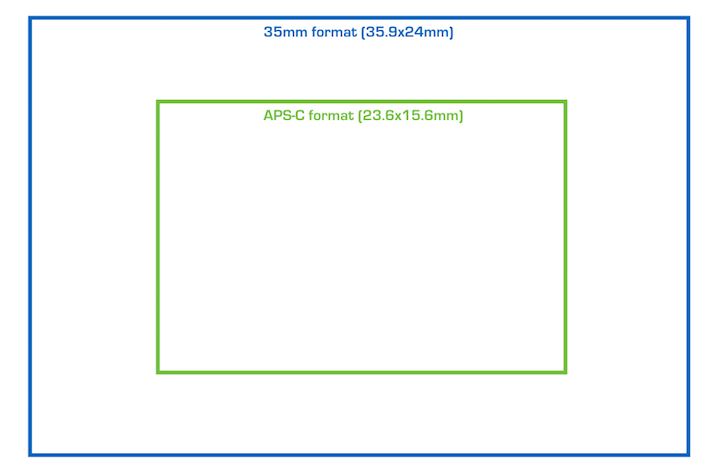
Working with the A7rIII brings two main advantages: more shallow depth of field when the two cameras are set to the same aperture value and added resolution. The full-frame camera also promises 15 stops of dynamic range. That said, the latest APS-C Sony sensors are also excellent in terms of dynamic range performance, not to mention that 24MP is sufficient for most applications.
Whether we’ll see a difference in low-light performance is harder to predict. In our experience with the A7rIII’s predecessor, the A7r II, the results were very good up to 6400 ISO so we should expect similar or slightly better performance overall. The a6500 could have a small advantage due to the lower megapixel count, but a side-by-side test is the only way to confirm this.
Both cameras have 14-bit output, although only the A7r mark III has an uncompressed RAW option. 14-bit is maintained on the A7r III during silent/continuous shooting (except when shooting at 10fps).
2. Body design
Ask anyone what the most conspicuous physical difference between the two cameras is, and they’ll most certainly remark on the body design. Like all other models in the full-frame series, the new A7r III has an SLR-like appearance with a centrally placed EVF, whereas the a6500 sports a flat-topped design with the EVF on the left-hand side.
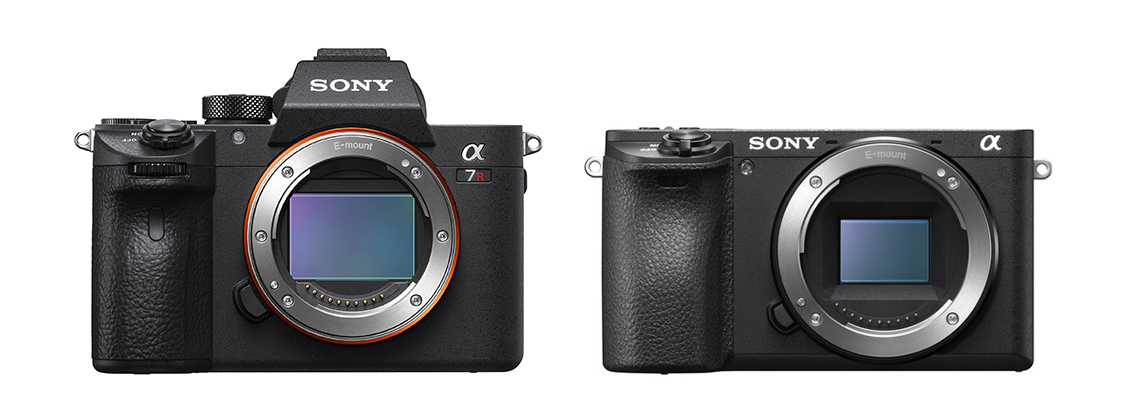
The A7rIII is also bigger and heavier, weighing 657g with the battery and memory card and measuring 126.9 x 95.6 x 73.7mm. The a6500 weighs just 453g and measures 120.0mm x 66.9mm x 53.3mm.
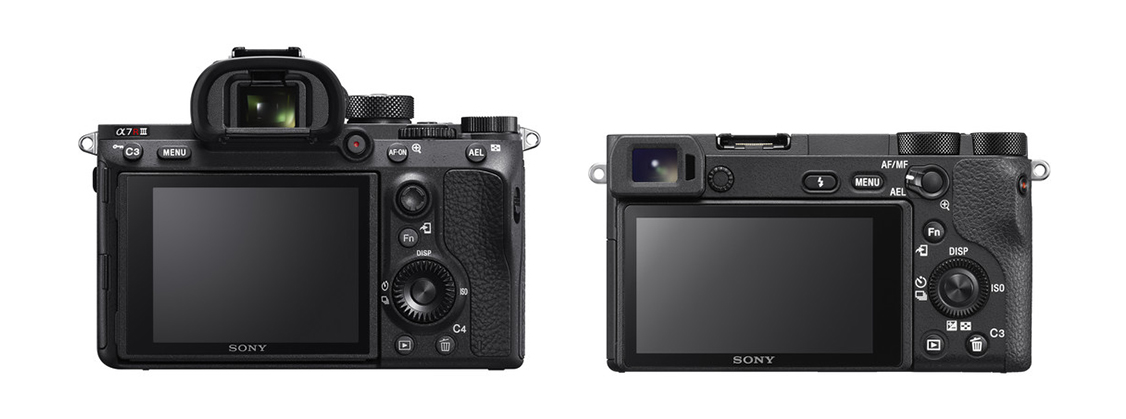
Both have a large grip but the A7rIII’s is a little more substantial. There are more external controls on the A7r II body too, including an exposure compensation dial, twin control dials on the front and rear, an AF joystick and an AF-On button. Many reviewers have also stated that the various dials and buttons have a better tactile feel.
To change the exposure on the a6500, you must use the control dial on top in conjunction with the rear control wheel, which isn’t the most comfortable solution.
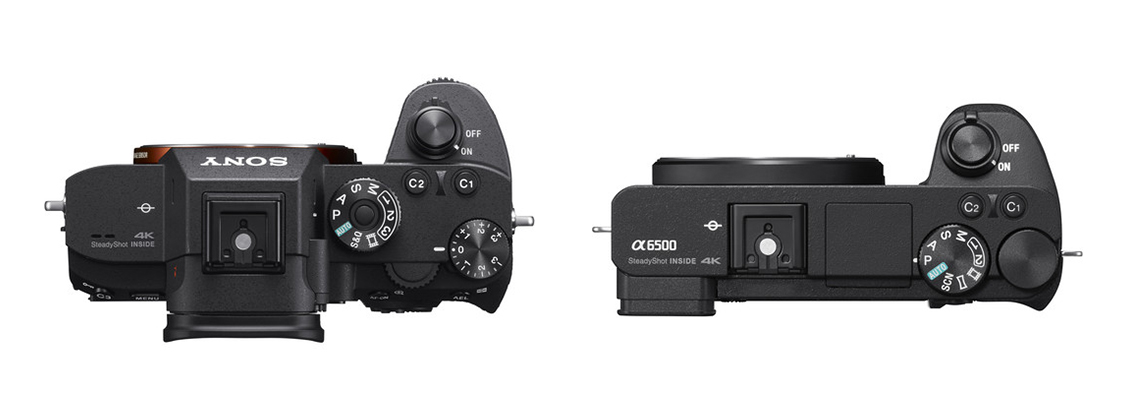
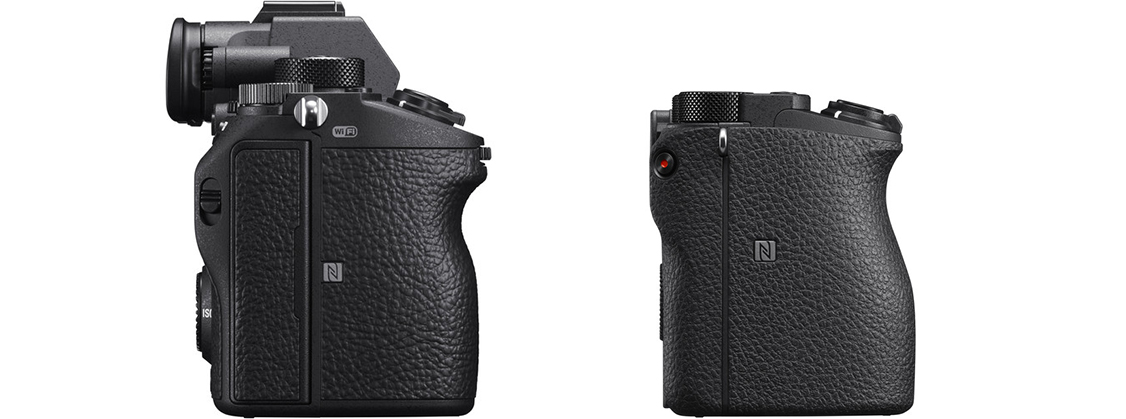
Importantly, the A7rIII also comes with a dual SD card slot, one of which is UHS-II compliant. Also present are a flash sync terminal and a USB Type-C terminal. The a6500, by contrast, has just one card slot that is UHS-I compliant. It lacks the two aforementioned terminals as well.
Both cameras come with a PSAM mode dial, movie record button, focus switch, hot shoe, multi/macro USB terminals and a vast array of customisable function buttons. However, only the a6500 has a built-in flash.
3. LCD monitor and EVF
Both the A7rIII and a6500 have a tilting rear LCD monitor but there are a few differences worth pointing out.
First is the aspect ratio. The screen of the A7rIII is a 3:2 type whereas the a6500 has a 16:9 type. The former is better for still shooting while the latter is more suitable for video recording.
Second, the a6500’s screen tilts up 90 degrees / down 45 degrees and has a resolution of 921,600 dots whereas the A7r II’s screen has more resolution at 1440k dots and tilts up 107 degrees / down 41 degrees.
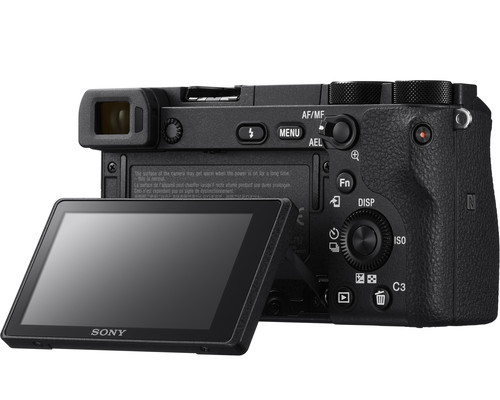

Unlike most Sony cameras that preceded the a6500, both have touch sensitive screens with which you can select the AF point even while composing with the electronic viewfinder. It also works for movie recording which is a boon if you want to produce a slow transition from one subject to another.
As we mentioned in the design section, the A7rIII’s XGA OLED electronic viewfinder is located at the centre of the body inside a hump that protrudes from the top plate, whereas the a6500’s is located on the left-hand side of the body.
It is larger than that of the a6500 (1.3cm vs 1cm type), has more magnification (0.78x vs 0.70x), and boasts a higher resolution (3686k dots vs 2359k dots) and is therefore more comfortable to use for extended shooting periods. The fact that it has a large eyecup should also enhance the user experience, particularly for those who wear glasses.

As for the characteristics they share, both have 100% field coverage, a 23mm eyepoint, and a maximum refresh rate of 120fps (though either can be reduced to 60fps if desired).
4. 5-axis stabilisation
The two E-mount cameras benefit from in-body image stabilisation (IBIS) that works on 5 axes (X, Y, Yaw, Pitch, and Roll) for stills and video but the A7r mark III has a more advanced hardware that can compensate up to 5.5 stops. The a6500, by comparison, is a half stop less effective at 5Ev. It’s a small difference, but worth mentioning if you often shoot hand-held in poor light conditions.
The stabilisation system is compatible with all E-mount lenses that transmit EXIF data. If the lens is optically stabilised, the camera uses 3 axes on the sensor along with 2 axes on the lens. And if your lens lacks electronic contacts, never fear – you can still use 3 axes on the sensor to stabilise your images.

5. Autofocus points
A very similar advanced hybrid autofocus system is employed on both the A7rIII and a6500. It combines focal-plane phase-detection AF and contrast-detection AF to deliver some of the fastest and most accurate autofocus performance on the mirrorless market.
The primary difference concerns the number of AF points: the a6500 has 425 phase and 169 contrast detection points covering 84% of the image area whereas the A7rIII has 399 phase and 425 contrast detection points with 68% coverage.
The low light performance should also be more accurate on the A7rIII due to its -3Ev minimum sensitivity (at f/2), a two stop improvement over the -1Ev of the a6500.
Both cameras work with autofocus and adapted DSLR lenses including Sony A-mount and Canon EF mount lenses via compatible adapters. They also provide an AF with magnification mode which is helpful for macro shooting.
6. Pixel Shift Multi Shooting
Next up is a feature that is currently exclusive to the new full-frame camera: Pixel Shift Multi Shooting. When activated, the A7rIII moves the sensor in one pixel increments, capturing four images that contain approximately 170MP of data. Using Sony’s new Imaging Edge software suite, these images can later be composited into one image that contains the full colour information of your scene. (Unfortunately the operation cannot be performed in camera.)
![]()
A similar function called High Res Shot is found on some high-end Olympus cameras with the difference that the final composite of the A7rIII doesn’t have an increased resolution; despite containing 170MP of image data, the final output remains 42.4MP. However, the mode does resemble High Res Shot in that it must be used for static subjects while the camera is on a tripod due to the short delay between shots.
7. Continuous shooting and buffer capabilities
The continuous shooting capabilities of the A7rIII have been upgraded in comparison to its predecessor, making it a worthy competitor for the a6500.
It can shoot at a maximum speed of 10fps with continuous AE/AF whereas the a6500 is just a little faster at 11fps. These speeds can be achieved with either the mechanical or electronic shutter enabled. Both models also provide a live view with blackouts up to 8fps.
An interesting advantage of the A7rIII is that it can shoot at 10fps with flash which is useful provided that your flash unit can keep up with the recycling speed.
In terms of buffer depth, the a6500 upstages the A7rIII in part thanks the lower megapixel count of its sensor. It can shoot up to 233 frames (JPG Extra Fine), 107 frames (RAW) or 100 frames (RAW & JPG) whereas with the A7rIII, this falls to 76 frames (JPG Extra Fine / RAW / RAW & JPG) or 28 frames (Uncompressed RAW).
In the case of the a6500, you cannot access any settings or enter the menu while the camera is writing the files to the memory card whereas with the A7rIII, certain settings in the menu are accessible.
8. Extra video functionalities
Before we take a look at the differences between their video functionalities, let’s get the similarities out of the way.
Both cameras offer 4K movie recording with full pixel readout in the Super 35mm format up to 30fps and utilise the 100Mbps XAVC S format. Uncompressed HDMI output enables the use of an external recorder for clean 4K recording with 4:2:2 sampling.
In addition to being able to shoot in slow motion up to 120fps in Full HD, both cameras feature the relatively new Slow and Quick (S&Q) Motion mode which allows you to record down to 5x slow motion and up to 60x quick motion at up to 50Mbps in Full HD in-camera. There is also the option to extract 8MP stills from footage shot in 4K.
Both cameras come with a wide range of dedicated picture profiles for video (9 on the a6500 and 10 on the A7rIII), not to mention S-Log2 and S-Log3 gamma. However, only the A7rIII offers support for HLG (Hybrid Log Gamma) HDR standard.
The main difference between the two is that the A7rIII is capable of recording 4K footage in either full-frame format or Super35. It doesn’t perform full pixel readout when using the entire sensor width but at least your field of view isn’t cropped, which is important when using wide angle lenses for instance.
Although both models sport a 3.5mm mic terminal, only the larger A7rIII has the space for a 3.5mm headphone output.
9. Bigger battery
Up until recently, all Sony E-mount cameras (including the a6500) used the NP-FW50 battery whose lifespan is rather poor, especially when you activate features such as burst shooting and 4K video.
The A7r III becomes the second camera following the A9 to receive the new NP-FZ100 battery which allows the camera to record nearly twice the number of images on a single charge (650 shots vs 390 shots) and twice the amount of 4K footage (100 minutes vs 50 minutes).
Our hope is that going forward, all high-end E-mount cameras will receive the same battery as the A7rIII.
10. Price
Debuting with a retail price of close to $3200 US (£3200 in the UK / €3500 in Europe), the new A7r III is more than twice the price of the a6500, which can be found for approximately $1400 brand new. Put differently, you could buy two a6500s for the price of one A7rIII and still have enough left over for a new lens!
Conclusion
Though it is too early to draw definite conclusions, we can predict that the video capabilities, as well as the autofocus speed, should be more or less on par given the similar specifications of the A7rIII and a6500.
The deal breaker, as we suggested at the beginning of this article, is of course the sensor. With the A7rIII, you get an excellent full-frame chip with a high resolution and impressive dynamic range without any compromise in autofocus or operation speed. Whereas its predecessors were better suited to genres like still life and landscapes, the A7r III is the first A7r model that truly deserves the title “all-rounder”.
This isn’t to say that all photographers require the sensor size or resolution of the A7r III, however, and that’s where the a6500 steps in. Our experience with the camera has shown that the APS-C sensor is more than sufficient for most purposes, and while the AF system is similar to that of the A7r III, the continuous shooting speeds and buffer depth actually remain a step ahead.
The larger sensor aside, some other features you could find yourself missing are the AF joystick, more powerful battery, and larger EVF – but I wouldn’t be surprised the a6500’s successor inherits the first two, if and when it is announced!
Check price of the Sony A7r III on
Check price of the Sony a6500 on
Amazon | Amazon UK | B&H Photo | eBay

